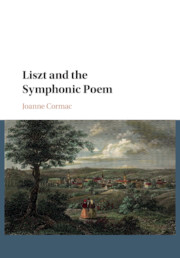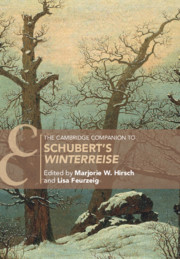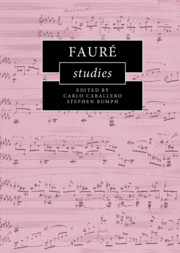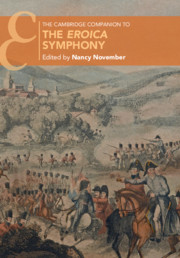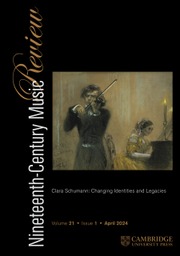Liszt and the Symphonic Poem
- Author: Joanne Cormac, University of Nottingham
- Date Published: September 2019
- availability: Available
- format: Paperback
- isbn: 9781316632642
Paperback
Other available formats:
Hardback, eBook
Looking for an examination copy?
This title is not currently available for examination. However, if you are interested in the title for your course we can consider offering an examination copy. To register your interest please contact [email protected] providing details of the course you are teaching.
-
Franz Liszt was preoccupied with a fundamental but difficult question: what is the content of music? His answer lay in his symphonic poems, a group of orchestral pieces intended to depict a variety of subjects drawn from literature, visual art and drama. Today, the symphonic poems are usually seen as alternatives to the symphony post-Beethoven. Analysts stress their symphonic logic, thereby neglecting their 'extramusical' subject matter. This book takes a different approach: it returns these influential pieces to their original performance context in the theatre, arguing that the symphonic poem is as much a dramatic as a symphonic genre. This is evidenced in new analyses of the music that examines the theatricality of these pieces and their depiction of voices, mise-en-scène, gesture and action. Simultaneously, the book repositions Liszt's legacy within theatre history, arguing that his contributions should be placed alongside those of Mendelssohn, Berlioz and Wagner.
Read more- Overturns the traditional view of the symphonic poems, an original argument that will change the way readers understand the genre of symphonic poems and Liszt's music in general
- Combines musical analysis, contextual and historical discussion, analysis of manuscripts and aesthetics, offering readers an in-depth and original discussion of the material
- Repositions Liszt's legacy within theatre and conducting history, appealing to readers with a broader interest in opera and theatre in the nineteenth century
Awards
- 2020 Alan Walker Triennial Book Award, American Liszt Society
Reviews & endorsements
'… a richly detailed interdisciplinary study that provides context for the symphonic poems' evolution, as well as a synthesis of Liszt's multifarious activities between February 1848 and August 1861 … The trenchant scholarship of Liszt and the Symphonic Poem is leavened with 77 music examples, reproductions of playbills and 11 helpful tables that detail, among other things, the evolution of individual symphonic poems as well as formal analyses.' Patrick Rucker, Gramophone Magazine
See more reviews‘I believe Liszt and the Symphonic Poem is a game-changer for our understanding of Liszt as a dramatic composer … beautifully written and meticulously researched.’ R. Larry Todd, Official citation for the 2020 Alan Walker Triennial Book Award, The American Liszt Society
‘… Liszt and the Symphonic Poem [is not merely a welcome addition to a sparse secondary literature, but instead] offers cohesive, intriguing views of Liszt as a man of the theatre, of his symphonic poems as works of astonishing ambition and breadth and of his pivotal position as an innovator in the tradition of nineteenth-century orchestral music.’ Paul Bertagnolli, Nineteenth-Century Music Review
Customer reviews
Not yet reviewed
Be the first to review
Review was not posted due to profanity
×Product details
- Date Published: September 2019
- format: Paperback
- isbn: 9781316632642
- length: 380 pages
- dimensions: 243 x 169 x 18 mm
- weight: 0.65kg
- contains: 7 b/w illus. 11 tables 77 music examples
- availability: Available
Table of Contents
Introduction
1. Liszt's activities as Kapellmeister
2. From the lyric to the dramatic: the development of Tasso
3. Prometheus, melodramatic mimesis, and the visual
4. Orpheus, opera and Werktreue
5. Formal innovation and dramatic gesutre in Festklänge
6. Hamlet and melodrama
7. Liszt's Weimar legacy.-
General Resources
Find resources associated with this title
Type Name Unlocked * Format Size Showing of
This title is supported by one or more locked resources. Access to locked resources is granted exclusively by Cambridge University Press to instructors whose faculty status has been verified. To gain access to locked resources, instructors should sign in to or register for a Cambridge user account.
Please use locked resources responsibly and exercise your professional discretion when choosing how you share these materials with your students. Other instructors may wish to use locked resources for assessment purposes and their usefulness is undermined when the source files (for example, solution manuals or test banks) are shared online or via social networks.
Supplementary resources are subject to copyright. Instructors are permitted to view, print or download these resources for use in their teaching, but may not change them or use them for commercial gain.
If you are having problems accessing these resources please contact [email protected].
Sorry, this resource is locked
Please register or sign in to request access. If you are having problems accessing these resources please email [email protected]
Register Sign in» Proceed
You are now leaving the Cambridge University Press website. Your eBook purchase and download will be completed by our partner www.ebooks.com. Please see the permission section of the www.ebooks.com catalogue page for details of the print & copy limits on our eBooks.
Continue ×Are you sure you want to delete your account?
This cannot be undone.
Thank you for your feedback which will help us improve our service.
If you requested a response, we will make sure to get back to you shortly.
×
